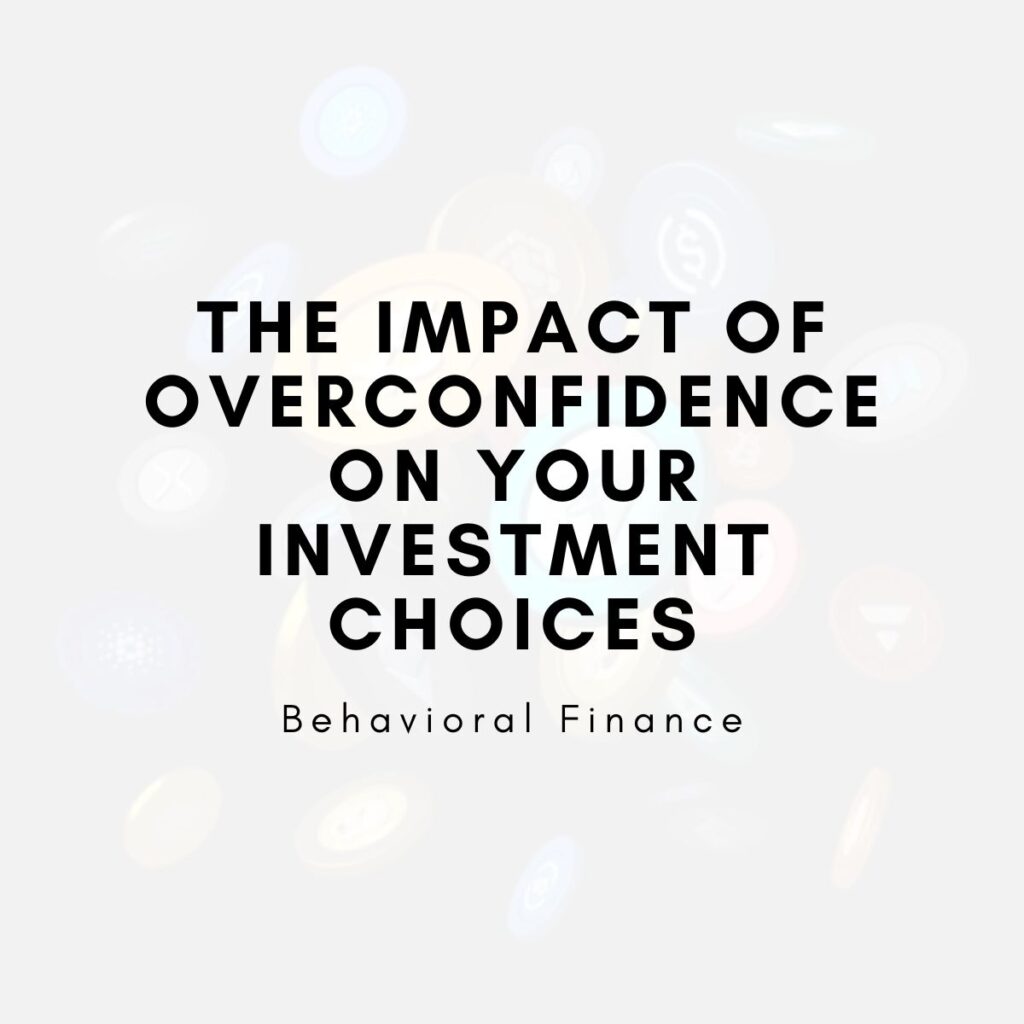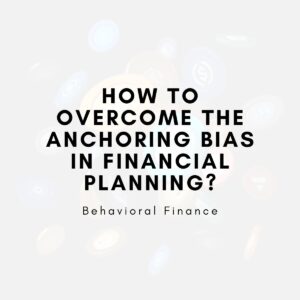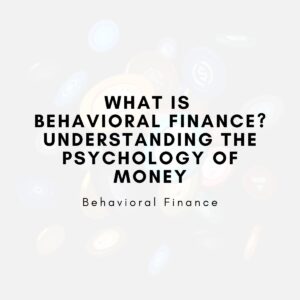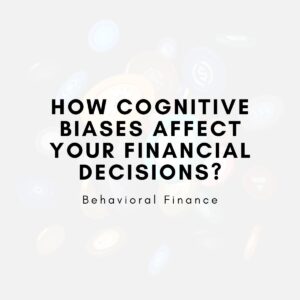
How does overconfidence affect your investment decisions?
Overconfidence bias —a psychological tendency to overestimate one’s abilities— can lead to risky financial decisions and poor investment outcomes. This guide explains how overconfidence manifests in investing, why it’s dangerous, and offers strategies with real-life examples to help you manage it effectively.
Summary Table: The Impact of Overconfidence on Your Investment Choices
| Section | Summary | Key Tips | Examples |
|---|---|---|---|
| Understanding Overconfidence Bias | Overconfidence bias causes investors to overestimate their skills, often leading to risky and impulsive financial decisions. | – Stay aware of the tendency to overestimate your abilities. – Use data-driven insights to guide your decisions. | John invested $50,000 in three stocks, overconfident in his predictions. When one stock underperformed, he lost $12,000. |
| How Overconfidence Leads to Mistakes? | Leads to excessive trading, underestimating risks, and ignoring diversification, resulting in lower returns and higher fees. | – Minimize frequent trading. – Regularly assess risk exposure. – Diversify your investments. | Tom incurred $2,000 in transaction fees after frequent trading, which reduced his annual returns by 3%. |
| Recognizing Overconfidence | Signs of overconfidence include trying to time the market, relying on limited sources, and setting unrealistic expectations. | – Avoid timing the market. – Broaden your research. | Anna relied on one financial newsletter, invested $40,000 in a single stock, and lost 10% before diversifying her portfolio. |
| Strategies to Overcome Overconfidence | Implement strategies like diversification, goal-setting, and sticking to a long-term plan to mitigate overconfidence. | – Diversify across asset classes. – Set realistic, data-driven goals. | Jack allocated $10,000 in bonds, $15,000 in index funds, and $5,000 in crypto after learning from past losses in tech stocks. |
| Overconfidence in Crypto Investing | Overconfidence in crypto markets can lead to excessive risk-taking and ignoring volatility, making it essential to diversify and have an exit strategy. | – Diversify crypto holdings. – Prepare for high volatility. | Chris reinvested his $15,000 profit from crypto into a new coin, which later lost 80% of its value, wiping out his gains. |
| Long-Term Impact on Financial Goals | Overconfidence can derail long-term goals by increasing risks and volatility. Adopting a patient and balanced approach can prevent this. | – Focus on long-term strategies. – Avoid impulsive short-term decisions. | David switched from timing the market to a long-term index fund strategy, steadily growing his portfolio by 7% annually. |
This table summarizes key sections of the post, highlighting the dangers of overconfidence in investing and offering practical strategies with real-life examples to help readers manage this cognitive bias effectively.
Introduction
Overconfidence is one of the most common cognitive biases in investing. It causes investors to believe they have superior skills or information, which often leads to taking excessive risks. Whether it’s trading stocks too frequently, underestimating market volatility, or ignoring diversification, overconfidence can have significant financial repercussions.
For instance, John, a retail investor, believed he had a special knack for predicting tech stock trends. He allocated $50,000 into just three companies, confident they would outperform the market. While two stocks performed well, the third suffered a significant drop, wiping out most of his gains.
This post explores the dangers of overconfidence in investment choices and provides actionable strategies to help investors avoid common pitfalls.
The Psychology of Overconfidence in Investing
Overconfidence arises from an inflated sense of one’s knowledge and abilities, leading investors to believe they can consistently outperform the market. This bias is often fueled by occasional short-term success.
How Overconfidence Bias Develops?
- Early Success in Investing
Initial success in investments can create a false sense of skill. Investors may attribute their gains to personal expertise rather than favorable market conditions. Example: Emily made a quick $10,000 profit from cryptocurrency trading during a bull run. She assumed her success was due to superior market timing rather than general market trends. - Selective Memory
Investors tend to remember their wins more than their losses, which reinforces overconfidence. This can result in repeating mistakes, such as holding onto poor-performing assets. Example: Mark forgot about the $5,000 he lost in a failed stock trade, but frequently cited his $8,000 profit from another trade.
How Overconfidence Leads to Poor Investment Decisions?
Overconfidence can significantly impact investment choices, often resulting in lower returns and higher risks.
Excessive Trading
Confident investors often engage in frequent trading, believing they can time the market effectively. However, studies show that frequent trading typically results in higher transaction costs and lower net returns.
Example: Tom traded stocks almost daily, incurring $2,000 in transaction fees over a year. Despite a few profitable trades, his net return was negative due to high fees.
Underestimating Risk
Overconfident investors often underestimate the risks associated with their portfolios. They may concentrate their investments in a few sectors or assets, leaving them vulnerable to market fluctuations.
Example: Sophie invested $30,000 entirely in real estate stocks, believing they were “safe.” When the real estate market dipped, she suffered a $6,000 loss.
Ignoring Diversification
Believing they can pick only “winning” stocks, overconfident investors often ignore the benefits of diversification. Without spreading their investments across different asset classes, they increase their exposure to market-specific risks.
Example: James put $20,000 solely into tech stocks. When a tech downturn hit, he lost 15% of his portfolio’s value, or $3,000, within a month.
Recognizing Overconfidence in Your Investment Behavior
Acknowledging overconfidence is the first step toward mitigating its negative effects. Here are signs that you may be overconfident in your financial decisions:
You Believe You Can Predict Market Movements
If you find yourself trying to time the market based on your instincts or incomplete information, it’s a red flag.
Key Tip: Instead of attempting to time the market, focus on long-term strategies like dollar-cost averaging.
You Rely Too Much on a Few Sources
Relying heavily on limited sources of information can lead to biased decision-making. Expand your research and seek diverse opinions before making investment choices.
Example: Anna relied solely on one financial newsletter and invested $40,000 into its recommendations. After suffering a 10% loss, she realized the need to broaden her research.
Strategies to Overcome Overconfidence in Investing
Overcoming overconfidence requires a combination of self-awareness, discipline, and strategic planning.
Diversify Your Portfolio
Diversification reduces the impact of individual asset volatility and lowers overall portfolio risk. Aim to spread your investments across different asset classes, such as stocks, bonds, real estate, and even cryptocurrency.
Example: After losing $5,000 from investing solely in tech stocks, Jack diversified by allocating $10,000 into bonds, $15,000 into index funds, and $5,000 into crypto.
Set Realistic Financial Goals
Avoid setting overly ambitious goals based on unrealistic expectations. Instead, set achievable goals that account for market uncertainty.
Key Tip: Use a financial advisor or robo-advisor to help you set appropriate, data-driven investment targets.
Example: Mia aimed to grow her $25,000 portfolio by 8% annually instead of trying to double it in two years.
Stick to a Long-Term Plan
Overconfidence often leads to impulsive, short-term decisions. By sticking to a long-term investment strategy, you can avoid unnecessary risks.
Example: David stopped trying to time the market and focused on a long-term index fund strategy, growing his portfolio steadily by 7% annually.
How Overconfidence Affects Cryptocurrency Investing?
Overconfidence in crypto markets is particularly risky due to the high volatility and speculative nature of digital assets.
Excessive Risk-Taking in Crypto
Crypto investors often become overconfident after making quick profits, leading them to take on excessive risk.
Example: Chris made $15,000 from an initial $5,000 investment during a crypto bull run. He reinvested all his profits into a single new coin, which later lost 80% of its value.
Ignoring Market Volatility
Overconfident crypto investors may underestimate how quickly market sentiment can change. To avoid losses, it’s essential to have an exit strategy and stay diversified.
Example: Laura spread her $10,000 crypto investment across Bitcoin, Ethereum, and stablecoins, reducing her exposure to market swings.
Conclusion
Overconfidence can significantly undermine your investment success by encouraging risky behavior, excessive trading, and poor diversification. Recognizing the signs of overconfidence and adopting strategies such as diversification, goal-setting, and sticking to a long-term plan can help mitigate its impact. Whether you’re investing in stocks, real estate, or cryptocurrencies, maintaining a balanced approach will lead to better financial outcomes in the long run.
Key Takeaways
- Overconfidence bias leads investors to overestimate their skills, resulting in poor decisions.
- Common pitfalls include excessive trading, underestimating risks, and ignoring diversification.
- Recognize the signs of overconfidence, such as trying to predict market movements or relying on limited information.
- Adopt strategies like diversification, realistic goal-setting, and long-term planning to overcome overconfidence.
- In crypto investing, manage risk carefully and stay aware of high market volatility.




